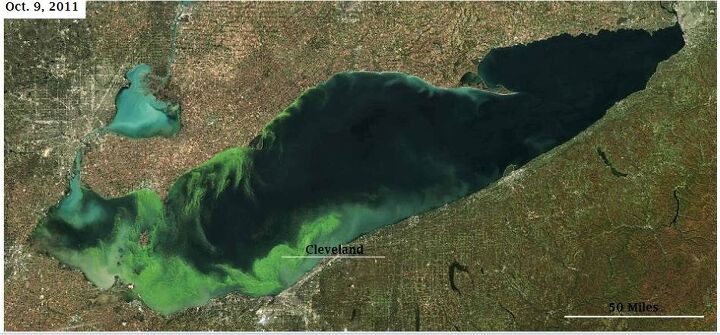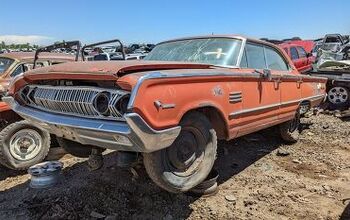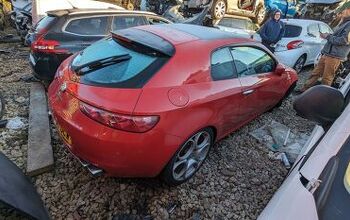Autoworkers, Agribusiness, and Algae: Toledo Back in Business, For Now

Toledo, Ohio has just squeaked by a major environmental crisis. A toxic algae bloom in Lake Erie poisoned the city’s water supply, leaving over 400,000 residents high and dry for three days. Restaurants, schools and businesses closed, the National Guard trucked in water, and the governor declared a state of emergency. Meanwhile, Fiat-Chrysler had to resort to creative measures to keep its Toledo Jeep plant running.
Operations stayed on track at the Toledo complex, thanks to some quick thinking by management, and the dedication of line workers. According to a company spokesman, the plant used tanker trucks and bottled water to overcome the crisis and keep 5,000 employees sufficiently hydrated. Even a short closure of the plant would have been bad news for FCA. The Cherokee and the Wrangler are among the company’s fastest-selling and most profitable models, accounting for a major chunk of the partnership’s recent run into the black.
With the ban on tap water now lifted, the worst of the crisis seems to be over. Even so, the threat to the Lake Erie watershed and the millions of people who depend on it still looms. Toledo’s water was poisoned with microcystin, a byproduct of blue-green algae. The toxin causes liver failure at fairly low concentrations. It’s difficult to filter out, especially at high concentrations. And it can’t be removed via boiling- that only concentrates the poison. In other words, it’s a public health nightmare and nearly as bad for business as a power outage. Preventing the blue-green algae is the only realistic prophylactic, which itself has been a decades-long struggle in the most polluted of the Great Lakes.
Blue-green algae primarily feeds off phosphorous and other organic pollutants. In the 60s and 70s, the primary source of these pollutants were the cities and industrial establishments on the Lake Erie shore. Untreated sewage and industrial byproducts choked the lake, eventually leading to fish kills and toxic blooms. The situation turned around in the 80s, after regulation and billion-dollar cleanups helped remedy the pollution. In the 90s, though, the situation began to reverse course. New farming techniques relied on heavy application of phosphorous and other fertilizers. This produced increased yields, but increased the inflow of organic pollutants into the lake. Zebra mussels also invaded the lake after 1988, producing more phosphorous and contributing to a vicious cycle of algae production. It wasn’t long until the algae blooms reared their ugly heads yet again.
In 2011, Lake Erie suffered one of its worst blooms ever. Nearly a sixth of the lake’s surface was covered in algae, almost 2,000 square miles. Phosphorous was again the culprit, but it alone wasn’t enough to explain the bloom’s severity. Instead, scientists point to climate change: specifically, the warming of Lake Erie’s waters. Warm water combined with torrential rains produced the catastrophic algae bloom, as more pollutants washed into Lake Erie from farmland. Scientists now fear that a combination of pollutants and changes in Lake Erie’s ecology could lead to more frequent algal bloom events. Unless something is done to rein in the green tide, more drinking water bans could be in the future for the communities that draw their supply from the lake.
What does that mean for the regional auto industry? Several major auto plants and their suppliers operate in the Lake Erie watershed area, in cities like Cleveland, Detroit, and Toledo. In addition, much of Lake Erie is a major commercial route for freight shipping. Many parts of the automobile production process are highly water-intensive, such as painting and steelmaking. Obviously, the standards for drinking water and water for industrial uses are quite different. But if a city like Cleveland is forced to shut down its water treatment system entirely in response to an algal bloom, it would spell big trouble for automakers with facilities in the area. The welfare of the workers is another factor to consider. Toledo Jeep dodged a bullet this time, but in future water crises it might not be so lucky.
The economic vitality of the Lake Erie region depends on ensuring the health of the lake. That became apparent after the infamous 1969 Cuyahoga River fire, which embarrassed Ohio residents and hurt the local economy. There’s been an enormous amount of progress since then, but new technologies present new challenges. Clamping down on the algae blooms is essential to ensuring the competitiveness of the industries around Lake Erie. The environment and the industrial world are never completely divorced from one another.

More by J.Emerson
Latest Car Reviews
Read moreLatest Product Reviews
Read moreRecent Comments
- VoGhost Great to see leadership from Washington in supporting American businesses and job creation.
- VoGhost Oh, Mattie, I am BEGGING you to take a course in economics. There's probably a community college near you offering courses for free or very cheap. Seriously, people this ignorant of basic economics really should not be writing this drivel. Stick to what you know: pimping for big oil.
- 2manyvettes I was a computer instructor in a local technical college for some years teaching Windows OS and Micosoft Office. Not long before I retired I purchased a Mac Book Air laptop. It didn't take me long to learn the Apple OS and the first thing I learned was the lousy job Microsoft did ripping off the Apple software. I purchased Microsoft Office for Apple at the time and discovered when Apple upgraded the OS to 64 bit and my 32 bit Office software would no longer run on the laptop, that embedded in the Apple OS was software that could open any Office file and could save any file in Microsoft file format. I have always felt if Apple sold product at PC prices they would put Microsoft out of business. Oh, and I bought my Mac ten years ago and still runs like brand new. Effect on Rivian? Who knows? Based on my experience with their technology, it could be interesting.
- Spectator This was an amazing vehicle. Back then Acura knew how to make a plush and comfy seat!
- Syke F1 fan and normally watch every race, although most of them are DVR'd. I've got my Xfinity box set up to record everything automatically. This past Sunday I watched the race live for a change.



































Comments
Join the conversation
Thank you for one of the best article I have read regarding the algal blooms in Lake Erie. An important part of this history is that the blooms came back after corn for alcohol was invented. The price for corn is so high that anything that increases yield is justifiable. Farmers plowed up stream bank buffers and roadside ditches to plant as much corn as possible. Fields were over fertilized to increase the yield per acre. The result is that the features that protect rivers and streams were destroyed and combined with greater rainfall events the fertilizer washes into Lake Erie in ever increasing quantities. The day has come where agriculture must be regulated like industry. It is not fair for ag to destroy the water and then expect the taxpayers to clean it up at their expense.
So why exactly was Ontario not affected? If we factor in lawn chemicals as being a source for the algae bloom, does that mean that the pesticide ban in Ontario is actually doing some good? I'm assuming Ohio and the neighbouring states still allow lawn chemicals but am too lazy to look it up.